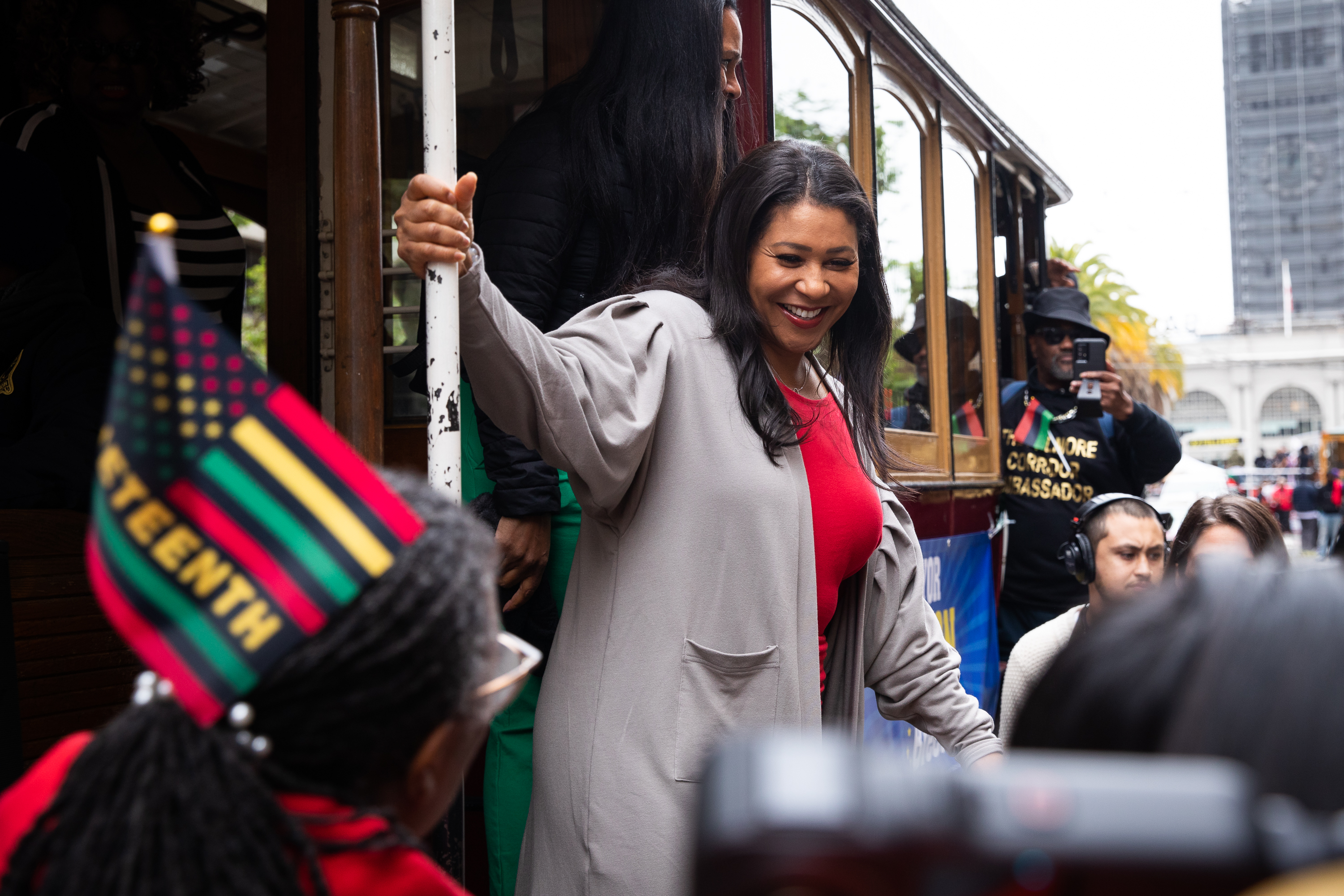In February, Mayor London Breed first publicly detailed the city’s strategy to bring back San Francisco’s notoriously struggling Downtown.
Six months later, flanked by members of a business community that has needled her over the slow pace of the city’s progress, Breed gave a status update at the San Francisco Chamber of Commerce in an effort to rally those members to remake the city’s image as a hospitable place to do business.
“I am optimistic about the future because what we’re seeing in San Francisco is something like we’ve never seen before,” Breed said.
Tactics laid out in the so-called “Roadmap to San Francisco’s Future” range from public safety improvements and increased planning flexibility to streamlining housing development projects and turning Downtown into a more mixed-use entertainment district.
In recent months, Breed has also floated more creative ideas—such as a potential soccer stadium at the San Francisco Centre mall and a new University of California campus—to breathe life into Downtown. Breed also asked city agencies to explore the possibility of relocating to low-priced office buildings in Downtown.
Outside of well-worn concerns about public safety, prominent business closures have continued, and office vacancy rates have hit record levels and are likely to notch even higher.
But Breed and her recently appointed director of the Office of Economic Workforce Development, Sarah Dennis Phillips, put a positive spin on the outlook for Downtown, noting the rapid growth of artificial intelligence. Eight of the top 20 AI firms in the world are located in San Francisco, and 13 are in the Bay Area, Breed said.
On the public-safety front, officials touted starting pay increases for San Francisco police officers and the nearly $50 million earmarked in the budget for non-law enforcement community ambassador programs like those managed by Urban Alchemy.
Breed said there have been 502 arrests for drug possessions and sales so far this year compared with 273 all of last year and highlighted partnerships with state and federal law enforcement agencies.
“We are arresting people for committing illegal acts on our streets,” Breed said.
The city has also aimed to help activate Downtown as an entertainment and cultural destination, including recent initiatives to bring a skate park to United Nations Plaza and launch a carnival in Civic Center. However, even those efforts have not been immune to controversy.
One concept that Breed has continually returned to is the potential to turn the Downtown mall formerly controlled by Westfield into a stadium that could host soccer games, concerts and other events. The city is working with the architecture firm Gensler on feasibility studies for the idea.
The conversations are preliminary, but the plan is to create a design to potentially shop around to developers and others who could help make the concept a reality, Breed said.
Likewise, Breed said that the University of California system has expressed some interest in having a presence Downtown, but that the discussions are in their early stages. The city is also in conversations with the City College of San Francisco, which has an underutilized Downtown campus, she said.
Breed touted some of the positive recent signs in the city’s office market, like a recent report from commercial real estate data firm VTS that showed demand for office space in the city growing by 10% in the second quarter, the highest level tracked by the study.
Real estate sources have said AI companies are currently seeking some 800,000 square feet of office space in the market. If the sector keeps growing at its current pace, real estate firm JLL has forecasted demand for office space in San Francisco to reach around 14 million square feet by 2030.
To help attract and retain business and stabilize the city’s fiscal situation, the mayor has made business tax reform a prime concern, acknowledging the impact of San Francisco’s tax structure on encouraging companies to relocate or keep workers home to save on tax bills.
“A lot of their issues center around their economic future and their ability to survive in a place like San Francisco, especially for our startups,” Breed said.
Breed has also directed agencies to take advantage of the downturn in the commercial real estate market and potentially pick up office space on the cheap for city workers.
City officials also report increasing interest in office-to-residential conversion projects. Although a number of logistical barriers exist, that pathway has been eased somewhat by legislation that relaxes planning rules for conversions.
Breed also pleaded with the city’s business community to help change the negative narrative around San Francisco by using opportunities like Asia-Pacific Economic Cooperation trade summit, when the city plays host to 21 heads of state, 1,200 CEOs and thousands of delegates from around the world.
“We’re the Yankees in a slump, and everyone is so excited to point out that slump,” echoed Dennis Phillips. “When you are successful for a long time, people want to see us fail.”
